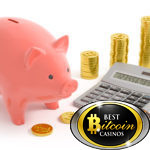
The Purpose of Money
Money is the means by which human beings express appreciation for the goods and services that add value to their lives. Put simply, money is a medium of exchange. Some people maintain that money is a store of value, a unit of account, or a standard for issuing credit, yet these are all tangential to the real purpose which is to facilitate exchanges between people.
Money arises from the self-interests of people in overcoming the need for a “double coincidence of wants” that exists in a barter economy. That is, if I am a corn farmer and want to buy a new pair of boots, in a barter system, I have to find someone selling boots that wants corn. If the boot seller has enough corn, I have to find something else that he or she wants in order to obtain what I want.
You can imagine just how slow the trading process would be in such a barter based marketplace.
Therefore, self-interest alone is sufficient to describe why human being would evolve beyond barter and seek out a common unit that would be universally accepted to facilitate trade. Historically, people from all walks of life have naturally drifted toward gold and silver as the commodity most used as money, and gold in particular.
Gold is a commodity that holds all the key characteristics of a desirable money unit. That is, it is durable, desirable, portable, divisible, and rare. Counterfeiting gold is easily detectable and dividing it into smaller portions does not diminish its inherent qualities.
Gold remains gold no matter how small it becomes. A grain, gram, ounce, or kilo of gold remains the same no matter what country or political territory you may find yourself. In this way, gold has the potential to be a universally accepted medium exchange world-wide. Then what has prevented it from doing so?
The Political Manipulation of Money
When governments become involved in the regulation of money, perversions inevitably occur. Studying the monetary history of any country will reveal a similar process:
First the government will take over the certification of the fineness and weight of gold as stamped on the bars of coins in circulation. Then the government will add a name to the currency being used so that people will begin thinking and pricing their goods in terms of the name, rather than in the specific weight of gold. Then the amount of gold within the government named currency will be continually reduced in a process known as debasement. When this leads to price inflation, for people will eventually catch on that the money they receive is less valuable than before and adjust their prices up to compensate, the government will mandate the acceptance of the named currency at its stated value. This is the point when money turns from being commodity based into a fiat or government commanded currency.
Under government commanded fiat currency people will be forced to accept money substitutes, such as diluted coinage or paper receipts for actual money that is supposedly stored in public treasuries. While the process of politically manipulating money away from commodities, like gold and silver, and into fiat currencies may take centuries, as it did during the Roman Empire, what is important to keep in mind today is that the United States completely detached the dollar from any connection to gold in 1971, and the entire world has ever since been operating with totally fiat currency.
While dollars, euros, yen, and francs continue to function as mediums of exchange the actual values of these currencies regarding the goods and services we use them to trade for are continually in limbo. These imparts chaos into the system of global exchange. Whereas one could know the value of goods and services were relative to an ounce of gold anywhere they may travel, under a fiat currency system that value scales are set adrift, and subject to subtle, yet sometimes drastic manipulations that occur due to government’s debasing their currencies.
Government control over money also sets trade back to a near barter system as people must first change their currency into the local fiat units whenever they cross a political border. So rather than being able to buy what I value when I travel, I have to first buy the local currency, before getting what I want. This is one key illustration of how government controlled money actually retards global trade and economic growth.
Technological Solutions
With the advent of crypto-computing, humanity has a new opportunity to wrest money and trade from the corrupting influence of governments. Having a decentralized means of trading value is available through Blockchain technology. The universal ledger prevents manipulations that would otherwise set the value scales adrift, as everyone can know that what gets transferred is exactly what is stated. This means a unit of gold can be transferred anywhere in the world and the parties can have confidence in the integrity of the transaction. The gold unit can be divided down to the most miniscule amount, and confirmation of the trade occurs almost instantaneously worldwide. By supporting divisibility and portability, Blockchain technology actually fulfills the true purpose of money for the information age.
Both gold and Bitcoin are derived from a deliberate mining process. The physical process of digging for and refining gold is replicated digitally through special encryption deciphering using special computer servers. This means that increases in the money supply are gradual and introduced in an incremental way that everyone can naturally adjust to. Bitcoin, using Blockchain infrastructure, is also divisible and transportable so that trade can occur for any desirable amount and anywhere in there world.
The idea of money remains as it always has: a medium of exchange that humans use to obtain the goods that add to the quality of their lives. Using gold as the universal standard of sound money, Blockchain and Bitcoin have the potential to free money from political manipulation and allow people to live more abundantly.









